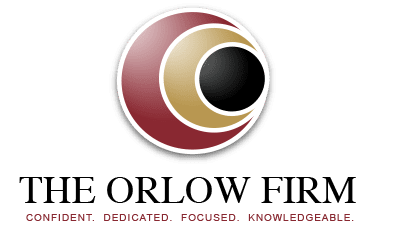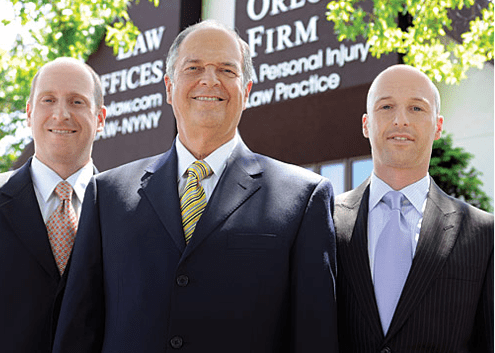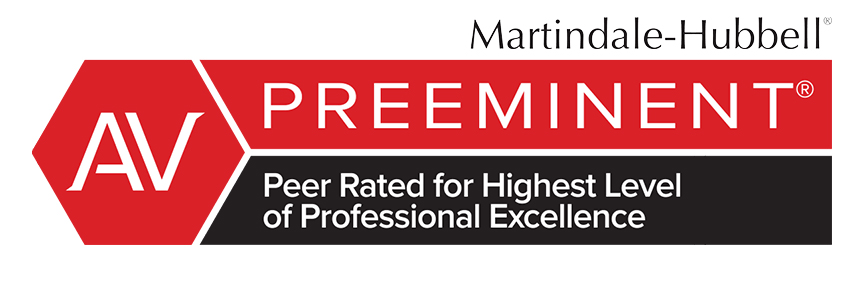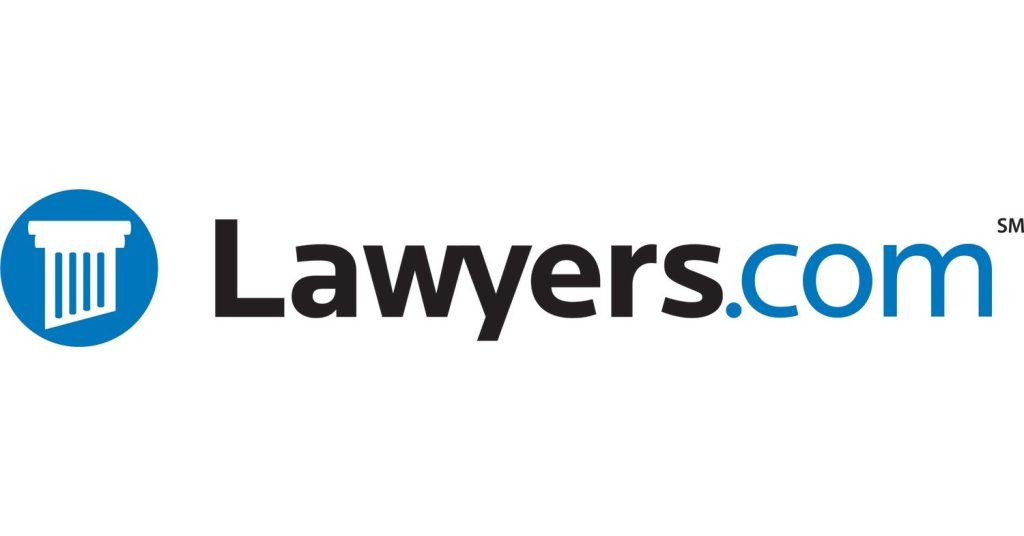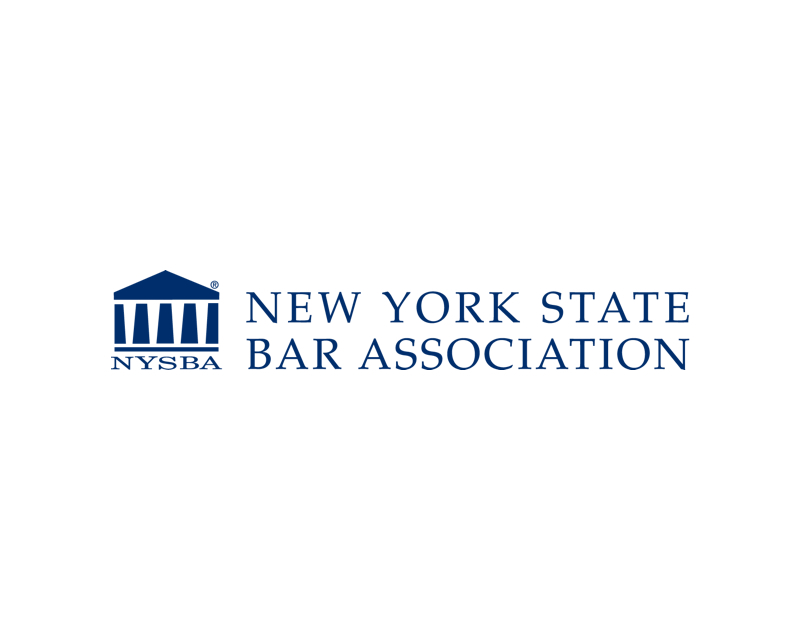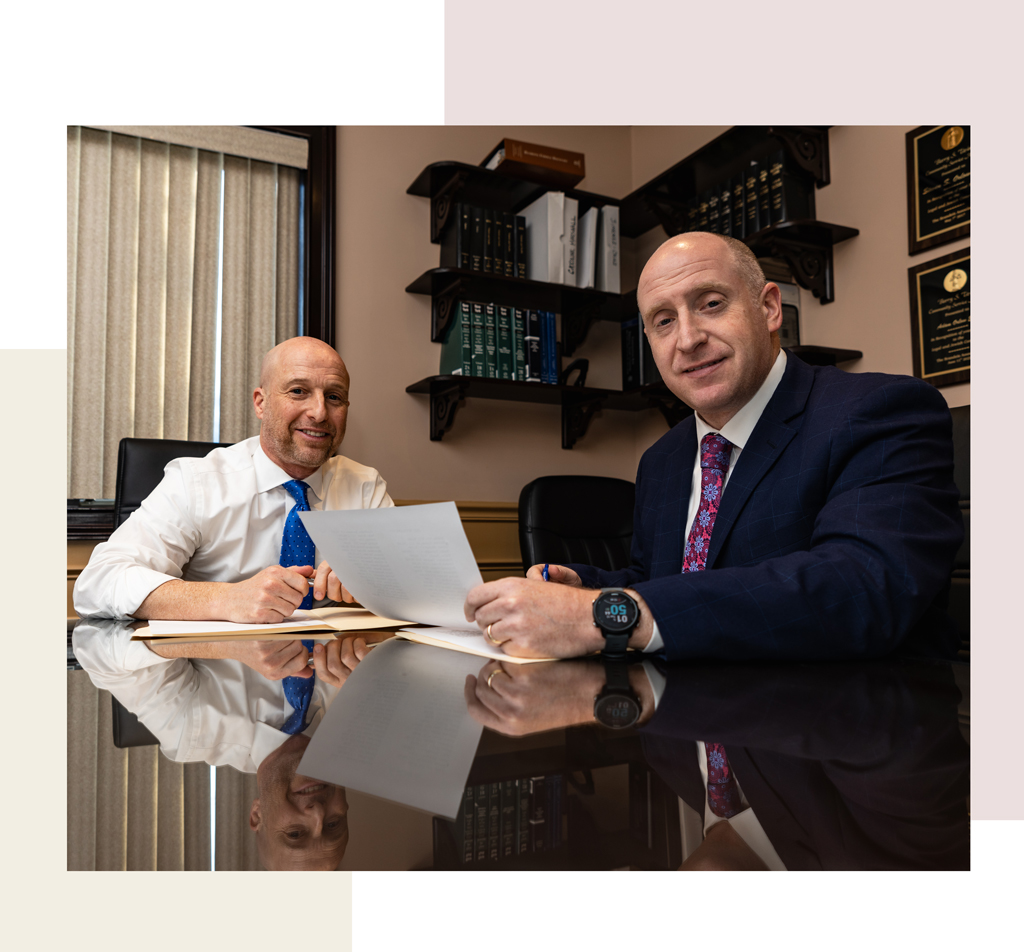The Following People Contributed to This Page
Cindy Cordova is a seasoned legal writer with over seven years of experience crafting clear, informative, and professional content for law firm websites. With a B.A. in English from Trinity Christian College, she combines her strong writing background with a deep understanding of legal topics to help firms connect with their clients through trustworthy and accessible content.
- July 8, 2025
What Is Considered a Dangerous Condition in New York City?
Quick Answer: In New York City premises liability cases, a “dangerous condition” refers to any hazard on a property that poses an unreasonable risk of harm to others. This could include anything from a cracked sidewalk to poor lighting in a hallway, and the key factor is whether the property owner knew about the hazard or should have known and failed to address it.
Here’s a more detailed explanation of dangerous conditions:
- Examples of Dangerous Conditions: These illustrate the variety of hazards that can lead to premises liability claims:
- Sidewalks: Including cracked, uneven, broken, or improperly maintained pedestrian pathways.
- Flooring: Hazards like uneven or cracked flooring, lifted carpets or rugs, and slippery surfaces from spills or inadequate cleaning.
- Stairways: Featuring uneven steps, loose or broken railings, or steps that are poorly designed or maintained.
- Lighting: Poor or inadequate illumination in common areas such as hallways, stairwells, parking lots, or building entrances, obscuring hazards.
- Spills: Failure to promptly clean up spilled liquids, food, or other debris that creates a slippery surface.
- Obstructions: Merchandise left in walkways, misplaced inventory, discarded debris, or other items that could cause someone to trip or fall.
- Defective Equipment: Malfunctioning or broken elevators, escalators, automatic doors, or objects that are not properly secured and could fall on visitors.
- Potholes: Unfilled potholes on the property itself, in parking lots, or in access areas that present a tripping or vehicle hazard.
- What Makes a Condition Dangerous?: To be legally considered a “dangerous condition,” the hazard must present an unreasonable risk of harm. This means that a reasonable person, exercising ordinary care, would recognize the potential for injury. Property owners have a responsibility to maintain their property in a reasonably safe condition for visitors and to warn them of any hazards that cannot be immediately fixed or are not obvious.
- Legal Implications: If a person is injured directly due to a dangerous condition on someone else’s property in New York City, they may be able to file a premises liability claim against the property owner. To succeed in such a claim, the injured person typically needs to prove that the property owner was negligent in maintaining the premises and that this negligence directly caused their injuries. This often involves demonstrating that the property owner either knew about the dangerous condition or should have known about it through reasonable inspection and maintenance practices.
If you or a loved one has been hurt due to a dangerous condition in New York City, you may have a legal right to seek compensation. To discuss your specific case, call The Orlow Firm’s premises liability lawyers at (646) 647-3398 for a confidential, free consultation.
How Do Dangerous Conditions Lead to Premises Liability Lawsuits?
A dangerous condition can lead to a premises liability lawsuit when someone gets injured because a property owner failed to fix or warn about the hazard. In New York City, property owners, landlords, or businesses must keep their places safe. When they don’t, and someone gets hurt, they may be held legally responsible.
To file a premises liability lawsuit, the injured person must show that the dangerous condition existed and that the property owner either knew or should have known about it. They also need to show that the owner didn’t take reasonable steps to fix the issue or warn others in time.
Here are the basic elements that must be proven in a premises liability case involving a dangerous condition:
- There was a hazardous condition on the property, such as a broken step, slippery floor, or loose handrail.
- The property owner knew or should have known about the dangerous condition. This is called “notice.”
- The owner failed to fix the problem or post warnings in a reasonable amount of time.
- An injury occurred because of that hazardous condition—for example, slipping, tripping, or falling.
- The injury caused damages , such as medical bills, lost wages, or pain and suffering.
In New York City, this can include incidents that happen in places like apartment buildings, stores, restaurants, public sidewalks, or office buildings. For example, if someone slips on an icy sidewalk outside a store that didn’t clear the path, and they suffer an injury, the store owner may be held responsible under premises liability law.
Dangerous conditions often become part of a legal case when the injured person can prove that the hazard could have been avoided. This usually means showing that the owner didn’t do routine checks or ignored complaints about the issue. Paying attention to building maintenance, lighting, security, and winter care (like removing ice and snow) is part of the responsibility owners take on.
If you’ve been hurt by a dangerous condition on someone else’s property in NYC, you may have the right to seek compensation through a premises liability lawsuit. To learn your legal options, you can contact The Orlow Firm at (646) 647-3398 for a free consultation.
Who Is Responsible for Fixing a Dangerous Condition in NYC?
In New York City, the person or group responsible for fixing a dangerous condition depends on who owns or controls the property. Property owners, landlords, tenants, business operators, and even the city government may all have legal duties to keep places safe. If they fail to fix a known hazard and someone gets hurt, they may be liable under premises liability law.
Here’s who may be responsible for fixing a dangerous condition:
- Private Property Owners: Homeowners and building owners are usually responsible for spotting and fixing hazards on their land. This includes things like loose stairs, icy sidewalks, or broken lighting.
- Landlords: Landlords must keep shared spaces in apartment buildings safe. These areas may include hallways, entryways, stairwells, and laundry rooms.
- Commercial Tenants: In stores or restaurants, the business renting the space may be responsible for fixing dangers inside—like wet floors or faulty doors.
- The City of New York: The city or another government agency may be responsible for unsafe public sidewalks, parks, or subway staircases. Claims against the city have shorter deadlines and special rules.
Responsibility usually depends on who manages the property and what the lease or ownership papers say. For example, a store owner renting space in a mall might be in charge of the inside of the store, while the mall owner takes care of common areas like parking lots or entrances.
If more than one party shares control of the property, they may share legal responsibility. In some cases, both a landlord and a business can be held accountable if they fail to act on a known danger.
To be held responsible, a person or business must have known—or should have known—about the hazard and failed to fix it in a reasonable time.
If you’re not sure who is responsible for the dangerous condition that caused your injury in NYC, speaking with a personal injury attorney can help. The team at The Orlow Firm can help investigate your case and identify all the parties who may be at fault. Contact us at (646) 647-3398 to schedule a free consultation.
What Are Common Examples of Dangerous Conditions in Premises Liability Cases?
In New York City, a dangerous condition is anything on a property that poses a risk of harm to people. These conditions can cause slip and falls, trips, or other injuries. Property owners have a duty to keep their buildings and land safe. When they fail to fix known problems, it can lead to a premises liability lawsuit.
Here are some common examples of dangerous conditions often seen in premises liability cases:
- Wet or slippery floors: Spills, leaks, or recently mopped floors without warning signs can easily cause falls.
- Broken stairs or handrails: Damaged steps or missing handrails can lead to serious injuries, especially in apartment buildings or public spaces.
- Uneven sidewalks: Cracks, lifted concrete, or potholes on city sidewalks or walkways can be hazardous to pedestrians.
- Poor lighting: Dim or broken lights in hallways, stairwells, or parking lots can make it hard to see dangers.
- Exposed wires or electrical hazards: Loose or uncovered electric wires can cause shocks or fires.
- Loose carpeting or floor tiles: Rugs or tiles that are not securely attached to the floor may catch someone’s foot and cause a fall.
- Falling objects: Items falling from shelves in stores or debris falling from buildings pose serious risks.
- Neglected snow and ice: In winter, property owners must remove snow and ice from sidewalks, entrances, and driveways in a timely way.
- Mold or poor air quality: Dangerous mold or chemicals in the air can cause health problems, especially in housing or workplaces.
- Malfunctioning elevators or escalators: Unsafe equipment in buildings can result in injuries to residents, employees, or visitors.
In a city as busy as New York, property safety is very important. These hazardous conditions can happen anywhere—apartment buildings, stores, schools, public parks, or transit stations. If the people responsible for the property knew about a dangerous condition—or should have known—and didn’t fix it, they could be held legally responsible.
If you’ve been hurt due to a dangerous property condition, you may have legal options. For compassionate and professional guidance, contact The Orlow Firm at (646) 647-3398 for a free consultation.
How Can You Prove a Property Owner Knew About the Dangerous Condition?
To succeed in a premises liability case in New York City, you must show that the property owner knew or should have known about the dangerous condition that caused your injury. This is known as proving “notice.” There are two main types of notice: actual and constructive.
1. Actual Notice
Actual notice means the property owner was directly told or clearly aware of the issue. Some examples include:
- A written complaint or report from a tenant about a broken stair or leaking ceiling.
- Previous repairs made to the same hazard, showing the owner knew it existed.
- Security footage showing staff inspecting or walking past the hazard multiple times.
If you can show the owner saw the problem or was told about it and failed to fix it, that’s strong evidence of actual notice.
2. Constructive Notice
Constructive notice means the dangerous condition existed for a long enough time that the owner should have known about it—even if no one told them.
To prove constructive notice, you usually need to show:
- The condition was visible and obvious, such as a large spill in a store aisle or uneven sidewalk.
- It had been there for an extended time before the accident, giving the owner reasonable time to fix it.
For example, if a puddle from a leaking pipe was on a hallway floor for two days, a court may find the building owner should have found and cleaned it.
3. Incident Reports and Inspection Records
Another way to prove knowledge of a dangerous condition is by requesting records. These may include:
- Maintenance logs showing whether inspections were done regularly.
- Incident reports showing others were injured by the same condition before you.
These records can help show patterns of neglect or ongoing problems the owner failed to address.
Why This Matters
In a premises liability case, proving that the owner knew—or should have known—about the dangerous condition is key to holding them accountable. Without this proof, the case may not succeed.
If you have questions about collecting evidence or proving notice in New York City, call The Orlow Firm at (646) 647-3398 for a free, confidential consultation. We’re here to help you understand your rights and take next steps after an injury.
What Should You Do If You’re Injured by a Dangerous Condition in NYC?
If you’re injured by a dangerous condition in New York City, it’s important to act quickly and carefully. Taking the right steps can help protect your health and your legal rights. Here’s what you should do:
- Get medical help right away. Even if you think your injury is minor, see a doctor. Some injuries get worse over time. Medical records can also help support your legal claim.
- Report the incident to whoever is in charge of the property. Tell a manager, landlord, building superintendent, or whoever owns or maintains the place where you got hurt. Ask them to make a report and get a copy, if possible.
- Take photos or videos of the dangerous condition. Use your phone to take clear pictures of what caused your injury. Try to document it before it gets cleaned up, fixed, or removed.
- Get contact information from any witnesses. If someone saw you fall or get hurt, ask for their name and number. Their statements could help your case later.
- Keep anything related to your injury. Save your shoes, clothes, or any items that were involved. Don’t wash or fix them. They could be used as evidence to show how the incident happened.
- Write down everything you remember. As soon as you can, make notes about how and when the injury happened. Include details like the date, time, location, and what the area looked like.
- Avoid speaking with insurance representatives before talking to a lawyer. Insurance companies may try to get you to settle quickly. Don’t give a recorded statement or accept an offer without legal advice.
- Contact a personal injury lawyer who handles dangerous condition cases in NYC. A lawyer can help you understand your rights, gather evidence, and deal with insurance companies or property owners.
A dangerous condition could be anything from a broken stairway to a slippery floor in a store. In a busy city like New York, these hazards are everywhere. Acting quickly after an injury can strengthen your legal case and help you get the compensation you may deserve.
If you or a loved one has been hurt due to a dangerous condition in New York City, The Orlow Firm is here to help. Call (646) 647-3398 for a free, private consultation.
What Compensation Can You Recover in a Dangerous Condition Claim?
If you were hurt because of a dangerous condition on someone else’s property in New York City, you may be able to recover money for your losses. This is called “compensation.” The goal is to help you return to the position you were in before the injury, as much as possible. The amount and type of compensation you can receive depends on the details of your case.
Here are common types of compensation people may recover in a dangerous condition claim:
- Medical expenses: This includes the cost of hospital stays, doctor visits, physical therapy, surgery, medication, and medical equipment.
- Lost wages: If your injury caused you to stop working or miss time on the job, you can seek repayment for that lost income.
- Future earnings: If the injury has long-term effects, such as making it hard for you to return to your job, you may be able to recover damages for lost earning capacity.
- Pain and suffering: This refers to the physical pain and emotional distress caused by the injury. While harder to measure, it’s often a key part of a claim.
- Loss of enjoyment of life: If you can no longer take part in activities you once enjoyed, you may be able to get compensation for that loss.
- Out-of-pocket costs: This might include transportation to medical appointments, home modifications, or help with daily tasks due to injury.
For example, if you slipped on a wet supermarket floor in the Bronx and broke your ankle, your hospital bills, missed work time, and pain from the fall may all be covered in your claim.
Each case is different, and the exact compensation depends on factors like the severity of your injury, the impact on your daily life, and how clearly the property owner was at fault.
If you think a dangerous condition caused your injury, it’s important to speak to a lawyer who understands New York City premises liability cases. The Orlow Firm can help you explore what compensation may be available based on your specific situation.
To speak with a compassionate legal professional, call (646) 647-3398 for a free consultation today.
How Long Do You Have to File a Premises Liability Lawsuit in New York?
In New York, if you’re injured by a dangerous condition on someone else’s property, you usually have three years from the date of the injury to file a premises liability lawsuit. This deadline is called the statute of limitations. If you miss this deadline, you may lose your right to seek compensation in court.
This rule applies to most slips, trips, and falls or other injuries caused by dangerous conditions, such as broken stairs, icy sidewalks, or poor lighting. However, there are important exceptions that can make the deadline shorter.
Special Deadlines for Claims Against the City or Government
When your injury happens on property owned by the City of New York or another government agency—like at a public school, subway station, or city sidewalk—you face stricter rules:
- File a Notice of Claim within 90 days of the injury.
- File the lawsuit within one year and 90 days from the date of the injury.
Missing the 90-day Notice of Claim deadline can prevent you from suing the city at all. That’s why it’s so important to act quickly when your injury involves government property.
Why Timing Matters
Even though you may have three years in some cases, it’s best not to wait. Evidence like video footage, witness statements, or cleanup logs can disappear fast. Acting sooner also gives your attorney more time to investigate and build a strong case.
Steps to Take After an Injury
- Get medical help right away, even if your injury seems minor.
- Report the incident to the building manager or property owner.
- Take photos of the dangerous condition, your injuries, and any lack of warning signs.
- Contact a premises liability attorney to learn your legal options and deadlines.
Deadlines in a dangerous condition claim can vary depending on the facts of your case. To protect your rights, it’s important to speak with a personal injury lawyer as soon as possible.
For help understanding how long you have to file your premises liability case in New York City, contact The Orlow Firm at (646) 647-3398 for a free, confidential consultation.
FAQ About Dangerous Condition and Premises Liability in NYC
- What does “dangerous condition” mean in NYC? A dangerous condition is any unsafe situation on someone’s property that could cause someone to get hurt. This might include broken stairs, icy sidewalks, loose railings, or poor lighting. In New York City, property owners must keep their property safe.
- Can a landlord be held responsible for a dangerous condition? Yes. If a landlord knows about a dangerous condition and fails to fix it in a reasonable time, they could be held responsible. This applies in both residential and commercial buildings.
- What if the property owner didn’t know about the hazard? The owner or manager can still be responsible if they should have known about the danger. In legal terms, this is called “constructive notice.” For example, if a floor has been wet for several hours and no one cleaned it, it may be argued that the owner should have noticed it.
- What types of injuries can lead to a premises liability claim? Common injuries include slips and falls, broken bones, head injuries, or sprained ankles. These often happen because of slick floors, uneven surfaces, or falling objects.
- Does the city of New York ever get involved in these cases? Yes. If the dangerous condition is on city property, such as sidewalks, stairwells in public housing, or subway platforms, the city itself may be legally responsible. Claims against the city have special rules and shorter legal time limits.
- Is there a time limit to file a dangerous condition lawsuit in NYC? Yes. In most cases, you have three years from the date of the injury to file a lawsuit. But if the city is involved, you must file a Notice of Claim within 90 days, and the lawsuit must be filed within one year and 90 days. It’s important not to wait.
- Do I need to take photos of the hazard? Yes, if it’s safe to do so. Photos can be strong evidence. Try to photograph the dangerous condition right after your injury, before it gets cleaned up or repaired.
- Should I report my injury? Always report the accident to the property owner, building manager, or staff right away. Ask for an incident report if available, and get medical care. All of this helps support your claim.
- Can I get money for pain and suffering? Yes, if the property owner is shown to be legally liable, you can seek damages for pain and suffering, lost income, medical bills, and other related costs.
- What if I was partly at fault? New York follows a rule called “comparative negligence.” This means even if you were partly to blame, you may still recover money—but your compensation could be reduced based on your percentage of fault.
If you were hurt because of a dangerous condition in New York City and have questions about your rights, The Orlow Firm is here to help you understand your legal options. Call (646) 647-3398 for a free and confidential consultation.
Contact The Orlow Firm for a Free Consultation About Your Dangerous Condition Case
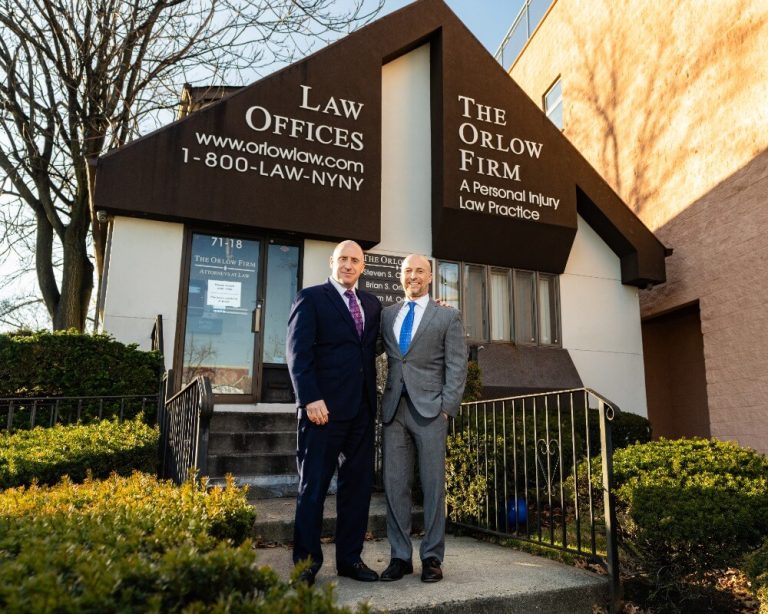
If you or someone you care about has been hurt because of a dangerous condition on someone else’s property in New York City, The Orlow Firm is here to help. We offer free consultations to discuss your situation and review your legal options. Speaking with an attorney can help you understand your rights and what steps you can take next.
A “dangerous condition” can include anything from slippery floors and broken stairs to poor lighting or exposed wires. These hazards often cause preventable injuries. If a property owner failed to fix or warn you about one of these conditions, they may be responsible for your injuries under New York’s premises liability laws.
During your free consultation with The Orlow Firm, we can:
- Evaluate your case to determine if the property owner or another party may be held legally responsible.
- Explain your rights in clear, simple language—no confusing legal jargon.
- Help gather evidence like photos, witness statements, and inspection records to strengthen your case.
- Discuss possible compensation you may be able to recover, such as medical bills, lost wages, or pain and suffering.
- Answer your questions about timelines and what to expect if you choose to move forward with a claim.
We understand that injuries can be stressful—especially when they happen because of someone else’s neglect. Our goal is to make the legal process as simple and supportive as possible for you.
Time matters. New York has strict deadlines for filing premises liability claims. Waiting too long could hurt your ability to recover damages.
Call The Orlow Firm today at (646) 647-3398 to schedule your free consultation. Let us help you protect your rights and explore your legal options after a dangerous condition injury in New York City.
The Following People Contributed to This Page
Cindy Cordova is a seasoned legal writer with over seven years of experience crafting clear, informative, and professional content for law firm websites. With a B.A. in English from Trinity Christian College, she combines her strong writing background with a deep understanding of legal topics to help firms connect with their clients through trustworthy and accessible content.
